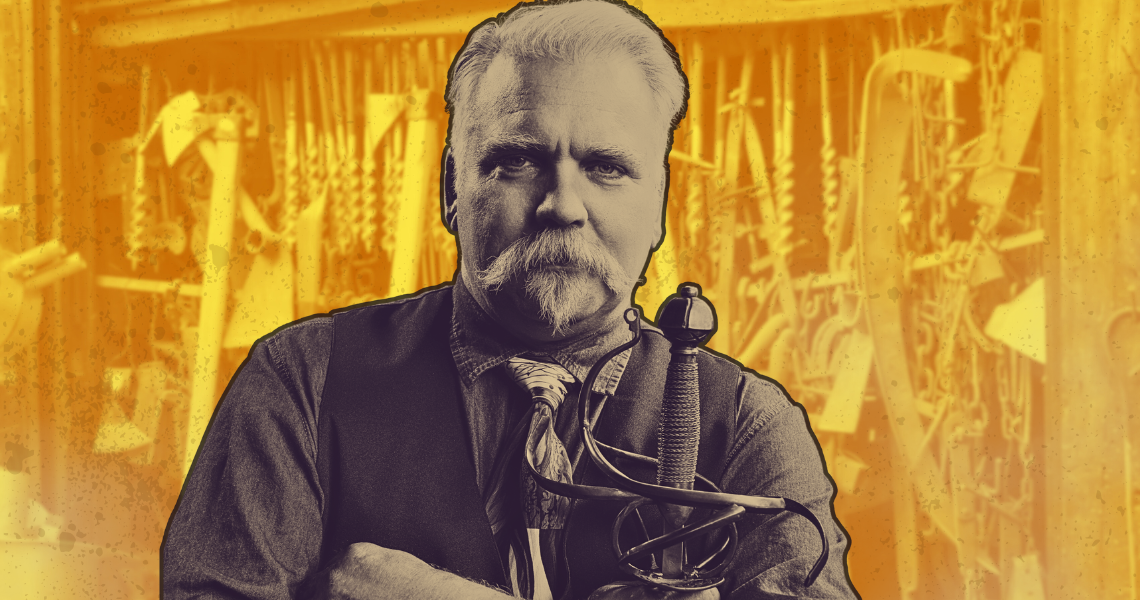The Challenges and Triumphs of Building a Bladesmithing Business
Bladesmithing, an art as old as civilization itself, has undergone a renaissance in recent years. Largely fueled by the popularity of television shows like Forged in Fire, the bladesmithing industry is offering opportunities in a craft that haven’t existed in centuries. However, transforming a passion for bladesmithing into a successful business venture is a journey filled with unique challenges and rewarding triumphs.
RELATED: HERE’S HOW YOU STAND OUT IN THE CROWDED BLADESMITHING INDUSTRY
Many of the Forged in Fire contestants whom we’ve interviewed have parlayed their appearance on the show into either a new, successful bladesmithing business or to bolster their existing one. Let’s take a look at the lessons learned from seasoned bladesmiths who have walked this path.
Forging a Business out of a Passion
The attraction to the art of bladesmithing is palpable and experienced by many people. Taking a cold piece of steel and forging it into something useful and beautiful is an intriguing artistic release. For many bladesmiths, the transition from hobby to business is organic but challenging. Securing the right tools, finding a workspace, and honing skills require not just dedication but also significant financial investment. The initial phase is often marked by long hours, steep learning curves, and the daunting task of making a name in a niche market.
Advice regarding getting into the business from seasoned bladesmiths is mixed. Some recommend investing in top-of-the-line tools and equipment immediately, while many suggest you just get started with what you have and work your way up. Regardless of what you choose, bladesmithing is the same as any other hobby when you attempt to make a living pursuing your craft. What is that age-old saying about the best way to ruin a hobby?
Navigating the Business Side
Understanding the business side of bladesmithing is crucial. Many bladesmiths, skilled in the art of metalwork, find themselves learning marketing, customer relations, and financial management on the fly. Josh Navarette, known for his stint on Forged in Fire and his work with veterans, highlights the importance of this balance. He runs a non-profit alongside his bladesmithing business, demonstrating the multifaceted role of a bladesmith-entrepreneur.
Eric Finch, another Forged in Fire competitor, experienced a surge in business post-show. “The day after the episode aired I finished a whole batch of knives and they all sold within 24 hours.” This reflects the power of visibility and reputation in driving a bladesmithing business, but it also brings to light the challenge of managing increased demand, maintaining quality, and scaling up production. As with any venture, a bladesmithing business is just that, a business. Your success will largely be determined by your ability to market your product.
The Role of Community and Networking
The bladesmithing community plays a vital role in the success of individual businesses. Clay Unruh’s experience on Forged in Fire is a testament to the importance of community. He speaks fondly of the camaraderie and networking opportunities that the show provided. This sense of community is not just limited to television appearances but extends to guilds, online forums, and local markets.
Matt Parkinson, a season one Forged in Fire contestant who runs Dragon’s Breath Forge, emphasizes community and education. “I teach all over the country... I really like teaching... it makes you think about what you're doing, why you're doing it, and how you're doing it.” For Matt, teaching is not just a revenue stream but a way to give back to the community and stay engaged with the evolving art of bladesmithing.
Overcoming Challenges
Every bladesmith faces unique challenges. For some, it’s the struggle to stand out in a market saturated with mass-produced blades. For others, it’s balancing the artistic integrity of their craft with the commercial demands of running a business. Forged in Fire alum David Roeder’s approach to overcoming these challenges is through diversification and innovation. He not only competes in shows but also crafts knives for celebrities and even movie props, as seen in his work for the Netflix movie Synchronic.
Finch, on the other hand, emphasizes the importance of social media in business growth. His presence on platforms like TikTok, with over half a million followers, showcases how modern marketing strategies can be effectively employed in this age-old craft. Of course, social media itself presents one of the greatest challenges to bladesmiths, as they frequently find themselves and their art being censored on various social media platforms.
The Rewarding Journey
Despite the challenges, the journey of running a bladesmithing business is immensely rewarding. The satisfaction of creating something both beautiful and functional, the pride in carrying forward a traditional craft, and the joy of connecting with fellow bladesmiths and enthusiasts make the hardships worthwhile.
The path of a bladesmith entrepreneur is not for the faint-hearted. It demands a blend of artistic skill, business acumen, and a deep love for the craft. However, for those who persevere, the rewards are not just in the blades they forge but in the legacy they create and the community they build. Dedication and passion are what truly define the journey of a bladesmith in business.
If you buy something through this post, BDF may get a share of the sale. Click here for more info.
TRENDING
About The Author
More Forged in Fire















